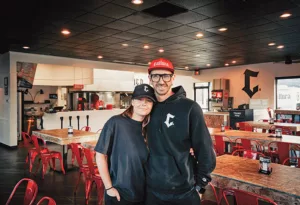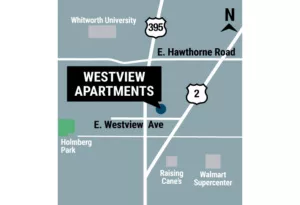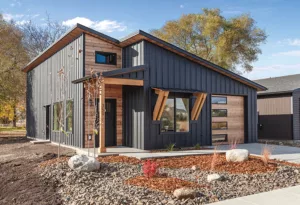
Home » Spokane Public Schools airs out stadium options
Spokane Public Schools airs out stadium options
Downsized Albi, neutral site, five small venues among ideas

April 11, 2013
Spokane Public Schools' facilities planners are suiting up to present ideas for major changes to the aging Joe Albi Stadium—and alternative options for abandoning it altogether, says Mark Anderson, the district's associate superintendent for support services.
Ideas that school officials will present at high school and neighborhood council meetings beginning next week range from an $18.1 million option to downsize the 63-year old facility to a 6,000-seat facility with improved parking, to a $29.4 million option to construct five high school facilities each with 2,600 seats, Anderson says.
A second variation of the five-facility option would be to expand outdoor facilities at Ferris and Shadle Park high schools to 3,500-seat capacity stadiums for larger events, and 1,500-seat facilities for regular events at North Central and Rogers high schools and at Hart Field, at a total cost of $23.4 million. Hart Field is the home outdoor athletic venue for Lewis & Clark High School.
Yet another option would be to construct a 6,000-seat stadium at a new neutral site, at an estimated cost of $23.7 million.
The cost estimates for reconfiguring Joe Albi Stadium or constructinga new stadium at a different neutral site don't include land-acquisition costs, Anderson says.
The ideas were developed as part of a series of studies conducted by the school district and ALSC Architects PS, of Spokane, to explore potential options for permanent football and soccer venues.
The city of Spokane owns Joe Albi Stadium, which is operated by the city's parks department. The stadium is located at 4918 W. Wellesley, next to the Dwight Merkel Sports Complex, which the parks department also operates.
"Joe Albi would be the most cost-effective option, depending on what the city would want for the land," Anderson says. "The city is having it appraised."
Records at the Spokane County Assessor's office list the value of the stadium, which is on a 93-acre parcel of land, at $14.5 million.
Leroy Eadie, parks director, says the department supports the school district's idea of acquiring and downsizing Joe Albi Stadium, but that approving the sale of that property would be up to the City Council rather than the parks department board.
"Talking with the schools, it's a great concept," he says.
The Spokane Sports Commission also prefers the concept of a smaller stadium at the Joe Albi Stadium site, says Eric Sawyer, the commission's president and CEO.
"There's just no need for a 26,000-seat facility in this market," Sawyer says. "If you shrink it down, renovate it, and improve it, it matches the synergy that exists at the Merkel site."
The 77-acre Merkel complex was improved in 2009 at a cost of $7.8 million, and includes softball, baseball, football, and soccer fields, a bike track, a skate park, splash pads, and other recreational amenities.
A smaller stadium could make room for more sports fields to be developed around it, Sawyer says.
"It's a good chance to look at the project holistically and see what other things could be done there to make it a community asset," he says.
Mike Werner, the city's asset manager, says there's a lot of interest in the future of Joe Albi Stadium, and many details still need to be worked out.
It's not the first time the future of Joe Albi Stadium has been in question.
Under terms of a current stadium lease, Spokane Public Schools and the Mead School District agreed to pay for new artificial turf in 2006 in exchange for the city keeping the stadium open for the life of the turf.
That agreement stemmed a controversy that erupted the previous summer, when former Mayor Jim West proposed to raze the stadium and sell its grounds to a housing developer.
Anderson says the city no longer wants to maintain the stadium, which has been operating with an annual budget deficit of $390,000 for a number of years.
"We've heard pretty clearly that the city would like to get out of the stadium business," he says.
Anderson says the school district's lease for Joe Albi Stadium expires in 2016, which is when the artificial turf will need to be replaced due to normal wear, the cost of which could approach $1 million.
Two previous studies have found that the stadium needs major upgrades to continue to function, he says.
Joe Albi Stadium, which was built in 1950 as a regional stadium, is too large for high school events and would require improvements in parking and lighting to meet modern standards, Anderson says.
Friday night football games have been attended by an average of 2,600 people in recent seasons, and peak rivalry or playoff games draw up to 6,000 people.
The school district has broached the topic of building a football stadium next to Avista Stadium, home of the Spokane Indians minor league baseball team, on the Spokane County Fair & Expo Center grounds. The Spokane Interstate Fair, though, is held during the football season, so parking would be a problem there during the fair, Anderson says.
The school district has identified two sites in the Hillyard area that might be large enough for a 6,000-seat stadium with parking for at least 800 vehicles, he says.
As far as the multiple smaller-stadium option goes, none of the schools have adequate parking for football games, Anderson says. Ferris has the most parking with 650 spaces, Anderson says. Parking at the other schools ranges from 302 spaces at Rogers to 366 spaces at Shadle.
"The bottom line is there would be a lot of people parking in the neighborhoods for those games," Anderson says.
The cost of owning five facilities would be much greater over a number of years than owning one shared facility, Anderson says. ALSC has determined that the 20-year cost of owning a single 6,000-seat stadium would be $23.3 million to $28.9 million, not including the initial cost of acquiring the land, while the cost of owning five football and soccer facilities—one for each high school—would be $37.3 million to $45.3 million over 20 years.
School planners still have to tackle the issue of how to fund any of the options, Anderson says.
The district plans to begin school-facilities studies next fall for a 2015 bond measure, he says, but he adds that the district likely would have some reservations about including stadium funding in such a measure.
Some district executives believe one reason voters passed the $288 million facilities bond measure in 2008 was because it kept the schools property tax levy rate roughly level with the $165 million bond measure voters passed in 2003, Anderson says.
"We had promised voters we would keep a flat tax rate for the next school projects," he says.
Stadium funding might not fit in that picture.
"Either we could have to make the choice of not doing a school or making the bond higher," Anderson says.
The district will distribute a community questionnaire to collect comments at a series of public forums tentatively scheduled over the next nine weeks. After reviewing comments, district planners will present a recommendation to the school board, Anderson says.
Latest News
Related Articles




